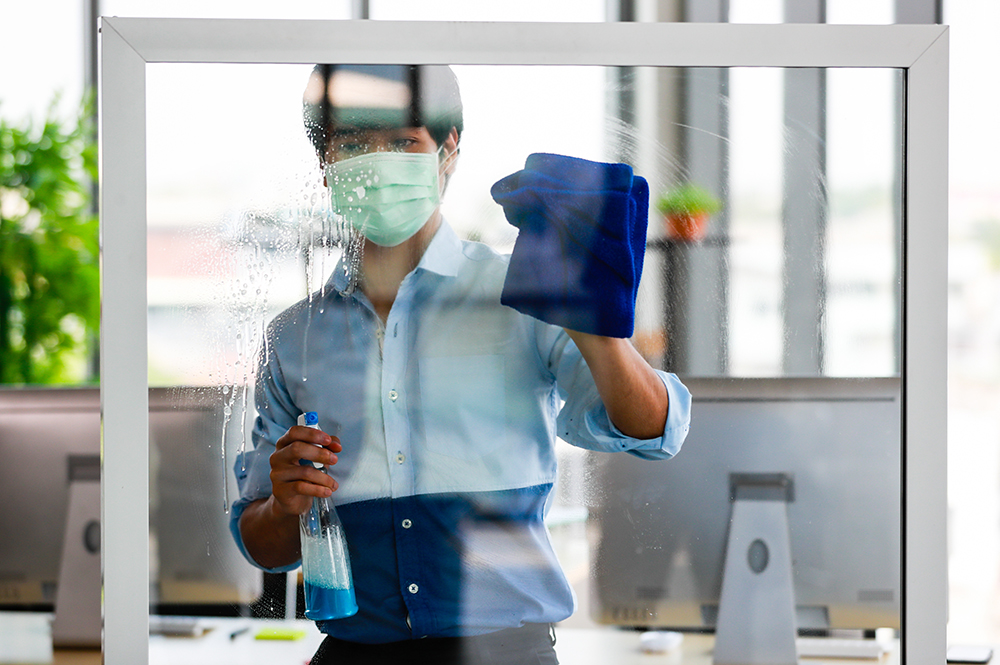

Columns/Blogs
Features
Health & Safety
Mental Health
Working Remotely
Reimagining the office in a post-COVID environment
By Anthony Ariganello
 (Bangkok Click Studio/Adobe Stock)
(Bangkok Click Studio/Adobe Stock) “Business as usual” has gone the way of the dinosaurs.
Since mid-March, the world of work has changed for all of us. For millions, it has vanished entirely, along with the businesses supporting them.
For those on the front lines, it became a cold war zone populated by an invisible enemy. For millions more, it became a “socially-distanced” memory as remote work became the new norm.
Unfortunately, while our social bubbles have expanded and greater numbers prepare to return to work and school alike, so too has a resurgence in COVID-19 case numbers, making questions around returning to the workplace paramount for business large and small.
Who is coming back? What will the new set up look like? When can XYZ be done safely? How do we define safe?
Since the entirety of those questions centre around people, HR is now officially at the forefront of the business mind, as everyone who never thought they were in HR has discovered they are — or are at the very least grappling with core HR questions.
As a result, leaders are looking to HR, with some realizing for the first time what CPHR Canada has always given voice — we are all human resources.
Indeed, if there is a silver lining, the pandemic has served as a catalyst for the kind of thinking HR professionals have so long embodied and promoted: strategic, inclusive and empathetic.
As a result, flexibility, due diligence and communication are all going to be key to create a safe, productive workplace.
Future of the office
As with restaurants and retail, the office space is going to look extremely different, and not just in terms of health and safety measures in common areas, but in terms of who is going to be in that space at any given time.
For some organizations that may require splitting office work times, bringing half the team in two days a week and the other for three, then alternating. For others, it will involve taking a hard look at who has worked well remotely and continue to do so.
As a result of these changes, businesses need to be taking a harder look at organizational culture and individual mental health alike.
From an HR standpoint, we’ve discovered a lot of people can work from home and that some have a strong desire to do so.
Organizations have always had policies for remote workers, but we need to take a new perspective as those shift from short-term to a longview application.
That not only makes the safe workplace a priority, but requires an expansion of definition to ensure the well-being of our remote workers as well.
Towards greater mental health
As everyone working from home for the past six months has discovered, the work never goes away when you work at home and COVID fatigue is something that has affected all of us.
The working hours stretch to all hours and any sense of work-life balance can go out the window. We’re not taking the breaks. We’re not stopping by to each other’s offices to brainstorm or just touch base. We’re not popping out for a walk with friends at lunch.
What this necessitates is understanding that mental health at work is as essential to our recovery as the protocols that have brought us to this point.
If we are going to have larger segments of our teams working remotely on an ongoing basis — as well as for the benefit of everyone within our offices — there needs to be a lot more emphasis on the mental health side of the health and safety formula.
This also makes having a strong health and safety co-ordinator a key requirement for more than the office workers alone.
In truth, now is the time to reach out to employees, listen carefully and find the greater potential beyond the perils and pitfalls we all know too well at this point.
What we need to see is the opportunity within the challenges before us — to embrace the efficiencies we have discovered during our workplace hiatus and return with new tools, processes and perspectives alike.
And while this is much akin to “Kaizen” — an ongoing business process grounded in the Japanese word for “improvement” and creating lean systems — few businesses are carrying the weight they did pre-COVID.
That said, coupling our newly acquired efficiencies with compassion, creativity and a continued “can-do” attitude is where each business is most likely to find their new formula for culture and commerce alike.

Anthony Ariganello is the CEO of CPHR Canada.
Print this page